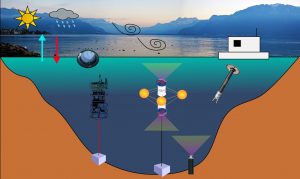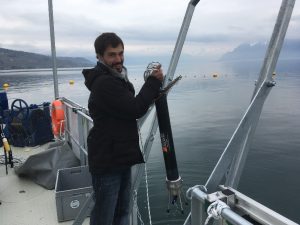- Turbulent motions redistribute the energy imparted into a lake by the atmosphere and stir the water parcels, enhancing mixing of heat and dissolved substances. In this way, turbulence influences physical, chemical and biological processes in lakes. The turbulent kinetic energy supplied to a lake by wind or heat exchange with the atmosphere can follow different pathways in a lake, until it is finally dissipated by molecular friction. The pathways vary from system to system and within the same lake, in space and time, and have different impacts for the functioning of the ecosystem. The episodic and chaotic nature of turbulence and the technical challenges for its quantification in the field, hindered our capability to fully understand the variability of turbulent mixing and its links to biogeochemical processes. Our research benefits from the availability of new instruments and the newly-constructed LéXPLORE Platform on Lake Geneva. These facilities will allow to improve the quantification of the different scales of variability of turbulent mixing, in order to better understand what are the pathways for energy dissipation and the implications for relevant processes such as primary production and gas exchange. (Bieito Fernández, Cary Troy, Tomy Doda)


Figure: schematics of the instruments deployed and operated to acquire currents and turbulence data in lake Geneva (top picture), and microstructure profiler being operated from the LéXPLORE Platform (bottom picture).
- Ulloa, H.N., G. Constantinescu, K. Chang, D. Horna-Munoz, O. Sepúlveda-Steiner, D Bouffard, and A. Wüest (2019). Hydrodynamics of a periodically wind-forced small and narrow stratified basin: A large-eddy simulation experiment. Environmental Fluid Mechanics. 19(3): 667 – 698. doi.org/10.1007/s10652-018-9645-1
Fernández‐Castro, B., Gilcoto, M., Naveira‐Garabato, A. C., Villamaña, M., Graña, R., & Mouriño‐Carballido, B. ( 2018). Modulation of the semidiurnal cycle of turbulent dissipation by wind‐driven upwelling in a coastal embayment. Journal of Geophysical Research: Oceans, 123, 4034– 4054. https://doi.org/10.1002/2017JC013582